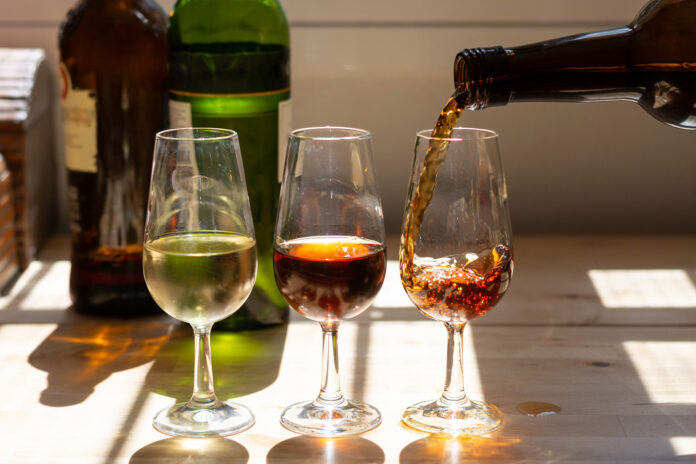A recent study conducted by the strategic consulting and market research firm, BlueWeave Consulting, revealed that the Global Fortified Wine Market was worth USD 12.73 billion in the year 2021. The market is projected to grow at a CAGR of 11.6%, earning revenues of around USD 27.35 billion by the end of 2028. The Global Fortified Wine Market is booming because of the premiumization of wine goods and their various health advantages. Additionally, in the approaching years, market growth is expected to be accelerated by technological development in production and flavor innovation. The demand for alcoholic beverages for various special occasions is increasing, which is helping the business thrive. Consumption of the product is seen as social recognition, which will fuel industry expansion throughout the projection period. Additionally, drinking fortified wine has several positive health effects. These are the primary market growth drivers. However, over the projected period, the market is anticipated to hinder growth due to rising taxes on wine in some countries and strict government rules and regulations.
Wine Brands’ Increasing Expenditure on Product Marketing
The increased investment by notable companies in product marketing and promotion to improve customer awareness is predicted to significantly contribute to industry growth in the coming years. Various countries, particularly that outside of Europe, have a distorted opinion of fortified wines, and their flavor is seen as undesirable and unsuitable. Increased promotional measures to improve knowledge of the benefits of fortified wine and to make fortified wine an indispensable component of social events and fine dining are likely to aid market growth. As a result, the expanding educational marketing of fortified wine is expected to promote the growth of the fortified wine business.
Rising Premiumization Product Demand and the Development of New Flavors
Premiumization promotes the expansion of the fortified wine sector since premium fortified wines have a good and promising effect on customer perception. As the middle-class population grows, premiumization can be seen in a variety of settings. By generating a sense of status around fortified wine, premiumization stimulates its consumption. Given that consumers’ perceptions of premium fortified wines are positive and enthusiastic, premiumization is projected to boost the market’s rise. This will most likely boost the fortified market shortly. During the forecast period, all of these factors will drive the growth of the Global Fortified Wine Market (2022-2028).
Request for Sample Report @ https://www.blueweaveconsulting.com/report/fortified-wine-market/report-sample
Challenge: Fortified Wines Include a Lot of Sugar and Calories
Wine naturally contains more sugar than the majority of alcoholic beverages because it is derived from grapes. Many varieties of fortified wine have even more sugar because spirits are added to the wine during the fermentation process before the sugars are converted to alcohol. Some types are sweetened after fermentation, greatly increasing the sugar amount. Port wines, which are sweet dessert wines, have about 7 grams of sugar every 3-ounce (88-ml) cup. Consuming sugar has been related to several diseases, such as diabetes, obesity, liver issues, and heart disease. According to the Dietary Guidelines for Americans 2015-2020, added sugar should make up no more than 10% of daily calories, or roughly 50 grams, per person.
Segmental Coverage
Global Fortified Wine Market – By Distribution Channel
Based on distribution channel, the Global Fortified Wine Market is segmented into Pub, Bars & Restaurants, Internet Retailing, Liquor Stores, and Super Markets. Among these, the liquor stores segment holds the largest market share. The market is being driven by the rising number of liquor stores around the world. Numerous manufacturers are making their products available offline, which is promoting the segment’s expansion. Additionally, category expansion is anticipated to be fueled by retailers’ easy access to a variety of products. Liquor stores are projected to continue to be dominant during the predicted period due to better distribution channel networks worldwide. According to forecasts, the fortified wine market’s internet retailing segment will expand the fastest, with a CAGR of 13.1% between 2022 and 2028. Due to the widespread usage of the internet, customers’ interest in online shopping has grown significantly in recent years. Alcoholic beverage sales on various manufacturers’ websites and e-commerce platforms will increase market demand.
Impact of COVID-19 on Global Fortified Wine Market
The COVID-19 pandemic-related lockdown hindered the production of fortified wine by interfering with transportation and briefly stopping the supply of raw ingredients. But in the years to come, increased health consciousness and encouragement of the consumption of fortified wine in the wake of the COVID-19 pandemic may lead to a considerable market growth rate. The market for fortified wine has been negatively impacted by the COVID-19 pandemic. All businesses were shut down because of the lockdown, which affected productivity. Around the world, almost all bars, eateries, pubs, and liquor stores were closed, which affected the volume and frequency of wine sales. The government did not list alcohol-containing products as essential.
Competitive Landscape
The leading market players in the Global Fortified Wine Market are E. & J. Gallo Winery, Constellation Brands Inc, Treasury Wine Estates, Trinchero Family Estates, Deutsch Family Wine & Spirits, The Wine Group, Liberty Wines Limited, Precept Wine LLC, Michelle Wine Estate, Backsberg, Sogevinus Fine Wines SL, Taylor’s Port, Albina & Hanna, and other prominent players. The Global Fortified Wine Market is highly fragmented with the presence of several manufacturing companies in the country. The market leaders retain their supremacy by spending on research and development, incorporating cutting-edge technology into their goods, and releasing upgraded items for customers. Various tactics, including strategic alliances, agreements, mergers, and partnerships, are used.
Contact Us:
BlueWeave Research Blog
Phone No: +1 866 658 6826
Email: info@blueweaveconsulting.com














